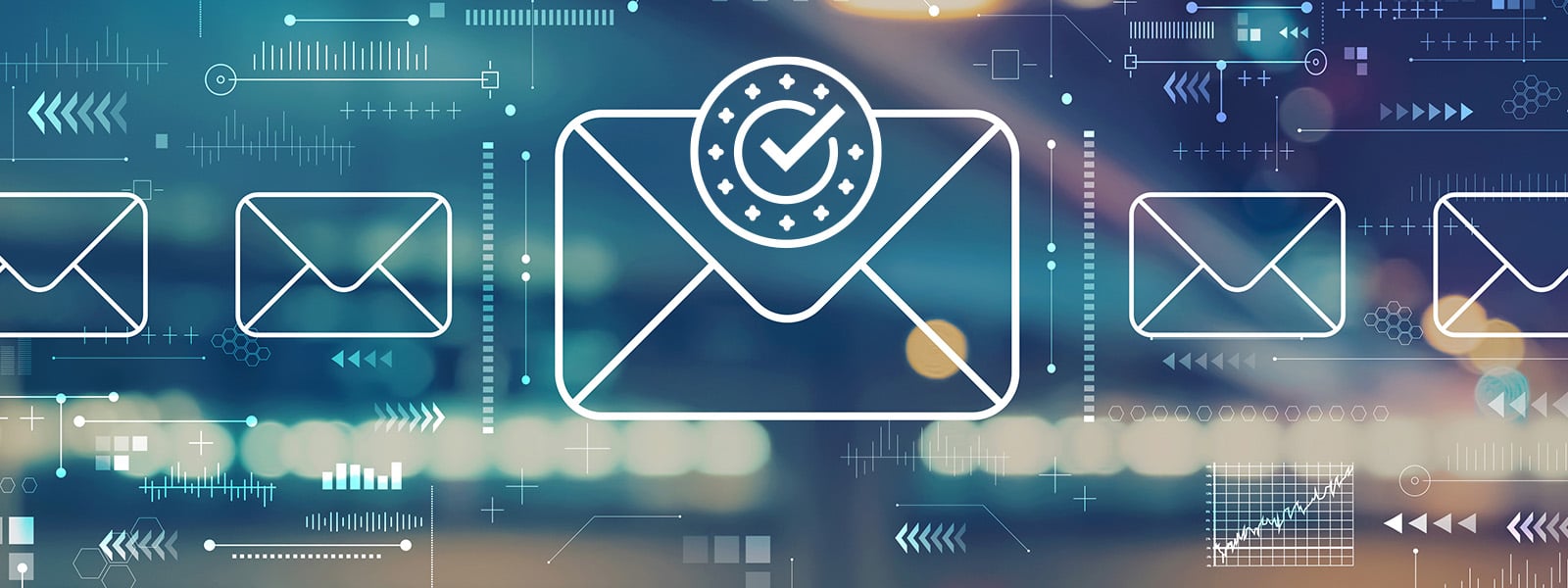Who this applies to and why you should care
If you’ve seen this update flying around, you’ve probably noticed some of the new rules only apply to accounts that send over 5,000 emails to recipients that use these providers per day (e.g. sending over 5,000 emails to Gmail emails). However, we recommend that everyone get compliant now, because:
- It’ll improve your metrics: These are already best practices and following them is likely to improve email deliverability for everyone.
- You may be sending more emails than you think: The 5,000 email threshold is for your whole domain, so it includes marketing emails, plus all the emails sent by people across your team.
- It’ll only get stricter from here: This is likely just the first wave of changes, we expect this threshold to go down over time.
What HubSpot is doing to help
HubSpot is launching two new features to help companies meet these new requirements:
- SPF & DMARC for ALL
- One Click Unsubscribe
HubSpot SPF & DMARC for All simplifies the once-daunting task of email authentication that you need to comply with these changes. It helps you:
- Seamlessly copy DMARC and SPF records from HubSpot to your DNS.
- Instantly check your connection status for DMARC, DKIM, and SPF within the HubSpot platform.
The new one click unsubscribe feature is happening in the background and doesn’t require you to take any action. HubSpot is updated marketing email headers to include a one-click unsubscribe link that recipients will see above your email next to the email sender information.
These updates are especially crucial for users of Marketing Enterprise, Marketing Pro, and Marketing Starter. If you're in one of these categories, it's time to get up to speed with these changes to ensure your emails continue to hit inboxes and not spam folders.
What HubSpot users should do to stay compliant with the new email requirements
If you use HubSpot to send marketing emails, we recommend taking the following steps to ensure you’re ready for these updates:
- Make sure your email sending domain is properly authenticated by following the instructions in the next section.
- Make sure all your marketing emails include a clearly labeled unsubscribe link (don’t try to hide it or label it as anything other than “unsubscribe)”.
- If you’re sending one-to-one emails from HubSpot, we recommend turning on unsubscribe links for these emails as well. You can do that for all users in your HubSpot portal by turning on data privacy settings, or individual users can turn it on in their general settings.
- Sign up for a free Google Postmaster Tools Spam reports from Google users do not appear in your HubSpot reporting, but you can see this data in Postmaster Tools. We also recommend setting up a tool that will monitor your Postmaster account and alert you if any issues pop up (our team can help you get set up with a free monitoring app).
- Keep an eye on your unsubscribe rates. Note that these may increase as HubSpot rolls out the one-click unsubscribe link in the email header. If you see an alarming spike, it may be a sign to improve your segmentation or the content of your emails.
Email authentication in HubSpot: 4 steps to follow for 2024
- Review your current email authentication setup: First, check your existing email authentication setup in HubSpot by navigating to Settings > Website > Domains & URLs, then scrolling down to “Email sending domains”. This will give you a baseline understanding of what's already in place and what needs to be updated.
- Update your DNS records: If you have authentication errors showing in this section, you’ll need to update your DNS records. HubSpot will provide you with the necessary DMARC, DKIM, and SPF records that need to be added to your DNS. Copy these records and update your DNS settings accordingly. Note that you won’t be able to use the HubSpot-provided SPF record if you also use the same email sending domain to send emails from tools other than HubSpot (such as a standard Google or Microsoft account) – in these cases you should consult with your IT team or a consultant to ensure proper setup. (More details here)
- Verify your domain: After updating your DNS records, return to HubSpot to verify your domain. This step is crucial to ensure that your emails are authenticated correctly.
- Monitor email performance: Post-implementation, keep an eye on your email performance metrics. Look for changes in open rates, click-through rates, and delivery rates, as these can indicate how well your emails are being received post-authentication update.
Need additional help with HubSpot + email authentication changes?
Book a free consultation with Simple Strat to learn how we can help with:
- Expert email audit: We'll dive deep into your HubSpot email setup, ensuring you meet the new authentication standards. Avoid the pitfalls of non-compliance and keep your emails landing in the right inbox.
- Hassle-free implementation: Our team will seamlessly integrate these changes for you. No need to sweat the technical details; we’ve got you covered.
- Automated monitoring: Stay on top of any issues with our automated monitoring and alerts for Google spam rates. Keep your sender reputation spotless and your engagement rates high.
Remember, the idea with this update is to ensure your marketing emails consistently reach your audience effectively. Taking these steps not only keeps you compliant with the latest email standards, but also enhances the overall performance of your email marketing campaigns.


